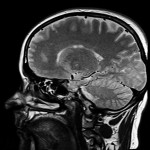I often tell my patients that such-and-such does or does not “cross into the blood-brain barrier.” A few days ago, one patient asked, “What is the blood-brain barrier?” Okay, let’s talk about this!
What is the Blood-Brain Barrier?
The blood-brain barrier is a protective barrier that actually decides which substances can cross from the bloodstream into the brain. The blood-brain barrier is semi-permeable (meaning: it lets some things through, and not others). The brain actually has its own “security system,”1 if you will. Therefore, all substances traveling through the blood vessels will not necessarily diffuse (get) into the brain. The types of things that tend to be able to diffuse into the brain from the blood are substances that can dissolve in fat. The cell membrane (covering of the cell), called the “lipid bi-layer,” is, itself, made of fat.
The Difference Between the Body’s Environment and the Brain’s Environment
The Body’s Environment
In the the body, the smallest blood vessels which come right up to the cells and exchange substances with them (bringing nutrients and removing wastes) are called called capillaries. The capillaries go out to ordinary places – to the stomach, heart, muscles, etc., and are able to exchange substances fairly freely between cell and capillary. The body’s levels of hormones, amino acids, etc., fluctuate during the day after meals, exercise, or during stressful periods.2
The Brain’s Environment
In the brain, however, the situation is quite different. The cells in the brain are clustered together more tightly. They’re joined by complex tight junctions3 which do not allow substances to come and go as they please; this is the blood-brain barrier–a composition of specialized brain microvascular endothelial cells (BMECs).4 It is a very selective permeability barrier which allows water, lipid soluble molecules, some gasses, brain-essential amino acids, and glucose, but keeps other things out. That is one of the things that makes it somewhat difficult to get therapeutic substances across the blood-brain barrier.5 The blood-brain barrier strives to keep a constant controlled environment in the brain.
Three Functions of the Blood-Brain Barrier
- Protects the brain from “foreign substances” in the bloodstream that may be harmful to the brain.
- Protects the brain from hormones, etc., that fluctuate throughout the day in the rest of the body.
- Maintains a constant controlled environment for the brain.
Things That Can Break down the Blood-Brain Barrier
- Hypertension (high blood pressure)
- A very high concentration of a substance in the blood (hyperosmolitity)
- Exposure to microwaves
- Exposure to radiation
- Exposure to infections
- Injury to the brain: trauma, ischemia, inflammation, pressure6
Getting Nutrients Through the Blood-Brain Barrier
Since we now know that good fats (nuts, avocados, olive oil, coconut oil, etc.) are good for the brain, and fat soluble substances can cross the blood-brain barrier, it is essential that the supplements taken for brain health can actually do their job. They need to be mycelized in oil (fat) in order to get to their destination. Our curcumin supplement, Curcumin Rapid Absorb, is mycelized in its own oil in order to allow it to absorb across the blood-brain barrier.
The same concept applies to magnesium. Do you know what type of magnesium you are taking? And for what purpose? There are types of magnesium that do not cross well into the blood-brain barrier (which can have a laxative effect), and types that do cross well into the blood-brain barrier (which have a calming effect). >>>Watch for our upcoming blog post about different magnesium compounds.
It is important for you to arm yourself with knowledge and learn why you are taking certain supplements or medications, and how they work in the body.


